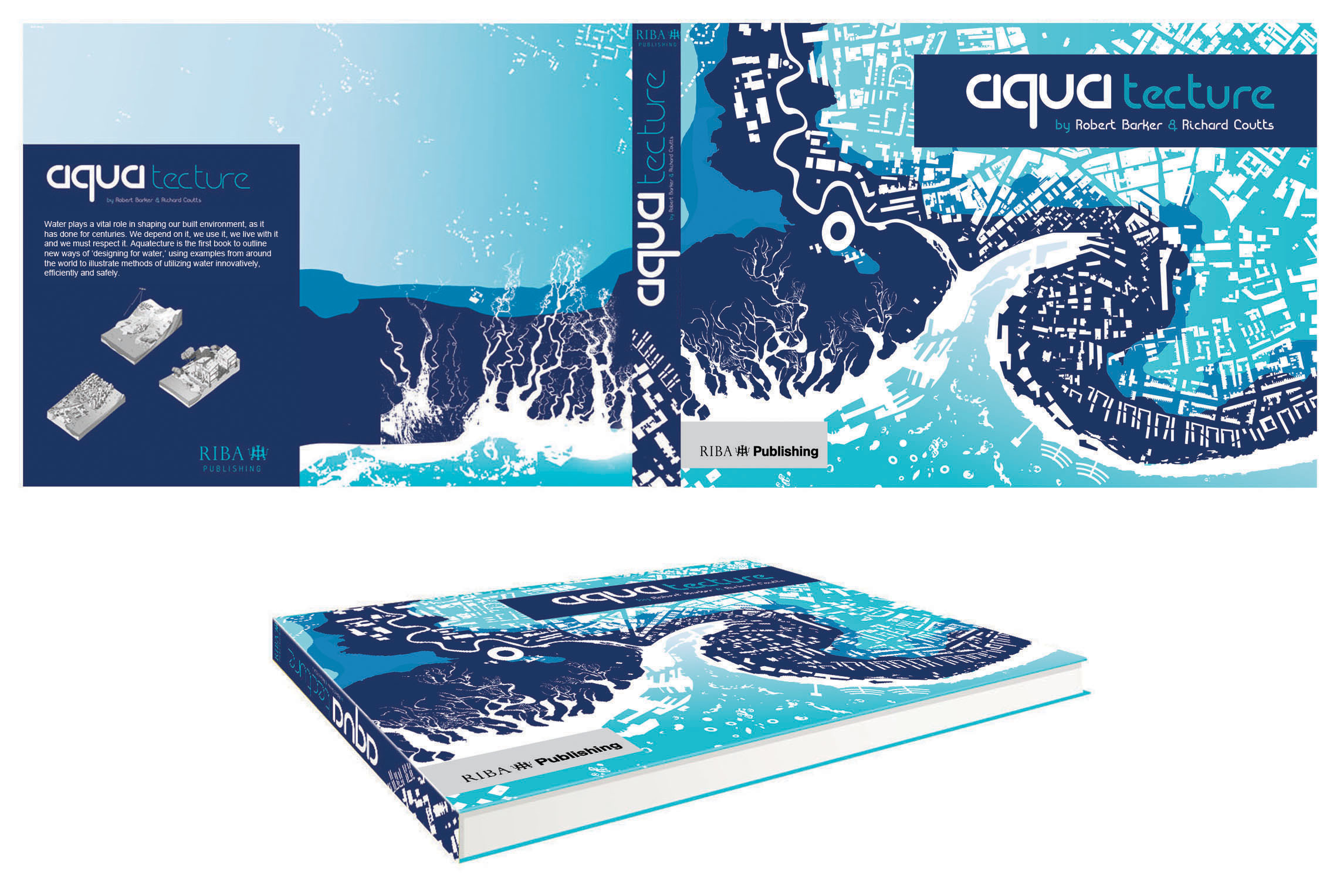Main author
Michael BrooksAquatecture - review
Robert Barker and Richard Coutts – 'Aquatecture: Buildings and cities designed to live and work with water'
Published by RIBA Publishing (2016)
This hefty and well-presented new book from the RIBA examines the vital role played by water in shaping the built environment. Since we depend on, use, and live with water, it is important that 'designing for water' is considered.
When one thinks of 'aquatecture', the first place that may spring to mind is Venice, a western city that is unique for being built on and around a lagoon. But modern architects too have sought to push the boundaries of the relationship between water and buildings; from Frank Lloyd Wright's iconic Falling Water, and Louis Kahn's Salk Institute, to Diller Scofidio & Renfro's Blur Building.
The book defines aquatecture as, 'A water-centric approach to design in which flood-risk management, development pressure and adaptation to climate change are simultaneously reconciled to allow buildings and cities to live and work with water.'
It examines the possible combinations of water and architecture, beginning with an historical overview. The relationship between water and architecture is examined; how water has shaped civilisations, how pressures from urbanisation increase the need to make space for water, and how best to cope with flooding through integrated design approaches.
It progresses on to what the possible future could look like in a world where climate change and flooding are increasing risks. It explores international approaches to designing with water across key disciplines of planning, landscape design, infrastructure and architecture. New innovative techniques are explored that the authors claim could 'revolutionise the way we think about water, design and urban planning'. Each is discussed and their respective effectiveness assessed.
Such innovations include:
- Amphibious (floating) buildings.
- Elevated buildings.
- Wet- and dry-proof buildings.
- Rain gardens.
- Flood storage.
- New methods of waterfront design.
Four case studies are provided:
- Building perspective: Amphibious house.
- Neighbourhood perspective: Seine Gare Vitry, Paris.
- City perspective: Shanghai, Future City.
- Regional perspective: Nijmegen and Lent, Netherlands.
Intended as a reference tool for architects, urban designers, planners and sustainability experts, 'Aquatecture' strikes a successful balance between providing technical information and exploring ambitious theories for future development. The illustrations and images throughout the book are excellent and serve to make it well-structured and a pleasure to dive in and out of and to examine in more depth.
For more information and to purchase 'Aquatecture', please see RIBA Bookshop.
[edit] Find out more
[edit] Related articles on Designing Buildings Wiki
- Bill Gething and Katie Puckett - Design for Climate Change.
- Blur Building.
- Charles Waldheim - Landscape as Urbanism: A General Theory.
- Coastal defences.
- Flood risk.
- Groundwater control in urban areas.
- Owen Hatherley - Landscapes of Communism.
- Prenuptial Housing.
- River engineering.
- Sustainable water.
- Thames barrier.
- Types of water.
- Urban Rigger.
- Water conservation.
- Water engineering.
Featured articles and news
Construction Skills Mission Board launch sector drive
Newly formed government and industry collaboration set strategy for recruiting an additional 100,000 construction workers a year.
New Architects Code comes into effect in September 2025
ARB Architects Code of Conduct and Practice available with ongoing consultation regarding guidance.
Welsh Skills Body (Medr) launches ambitious plan
The new skills body brings together funding and regulation of tertiary education and research for the devolved nation.
Paul Gandy FCIOB announced as next CIOB President
Former Tilbury Douglas CEO takes helm.
UK Infrastructure: A 10 Year Strategy. In brief with reactions
With the National Infrastructure and Service Transformation Authority (NISTA).
Ebenezer Howard: inventor of the garden city. Book review.
The Grenfell Tower fire, eight years on
A time to pause and reflect as Dubai tower block fire reported just before anniversary.
Airtightness Topic Guide BSRIA TG 27/2025
Explaining the basics of airtightness, what it is, why it's important, when it's required and how it's carried out.
Construction contract awards hit lowest point of 2025
Plummeting for second consecutive month, intensifying concerns for housing and infrastructure goals.
Understanding Mental Health in the Built Environment 2025
Examining the state of mental health in construction, shedding light on levels of stress, anxiety and depression.
The benefits of engaging with insulation manufacturers
When considering ground floor constructions.
Lighting Industry endorses Blueprint for Electrification
The Lighting Industry Association fully supports the ECA Blueprint as a timely, urgent call to action.
BSRIA Sentinel Clerk of Works Training Case Study
Strengthening expertise to enhance service delivery with integrated cutting-edge industry knowledge.
Impact report from the Supply Chain Sustainability School
Free sustainability skills, training and support delivered to thousands of UK companies to help cut carbon.
The Building Safety Forum at the Installershow 2025
With speakers confirmed for 24 June as part of Building Safety Week.
The UK’s largest air pollution campaign.
Future Homes Standard, now includes solar, but what else?
Will the new standard, due to in the Autumn, go far enough in terms of performance ?
BSRIA Briefing: Cleaner Air, Better tomorrow
A look back at issues relating to inside and outside air quality, discussed during the BSRIA briefing in 2023.
Restoring Abbotsford's hothouse
Bringing the writer Walter Scott's garden to life.
Reflections on the spending review with CIAT.



























